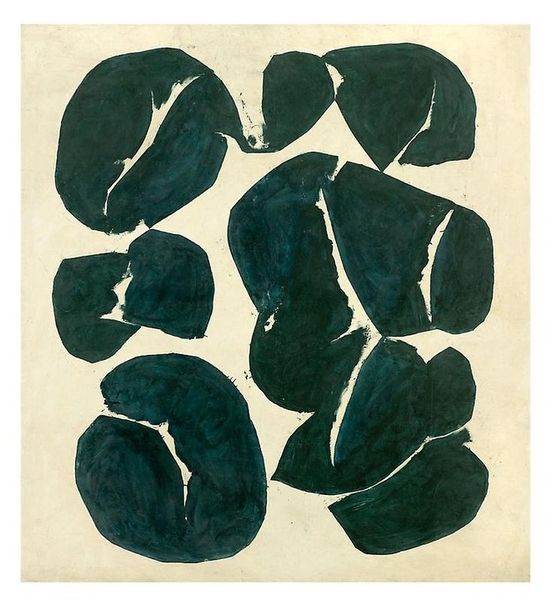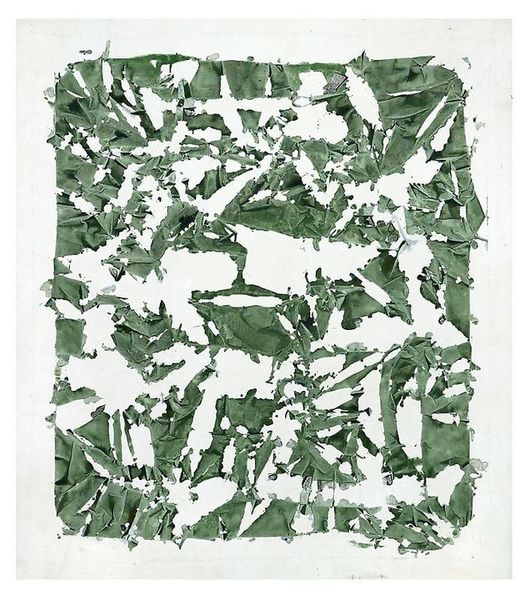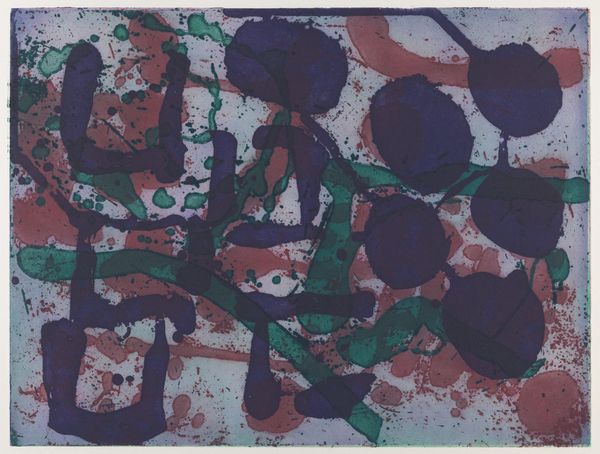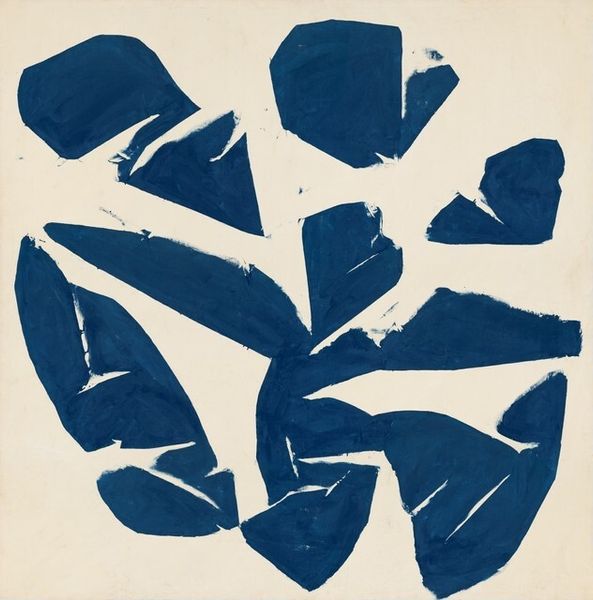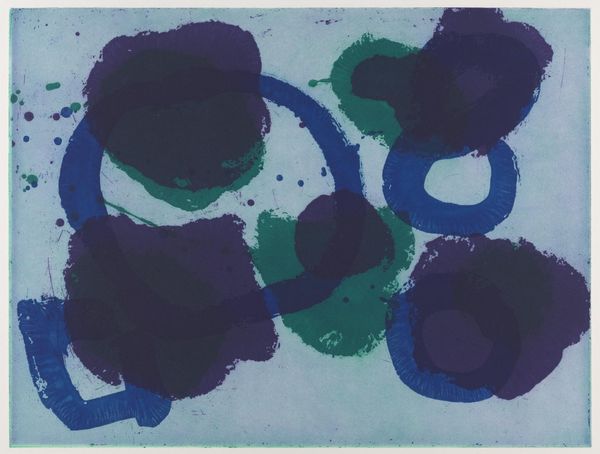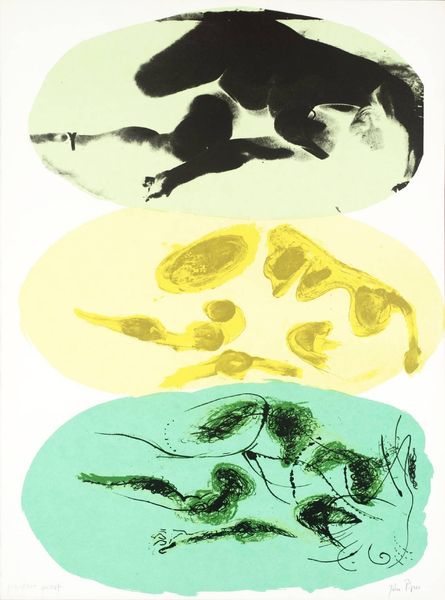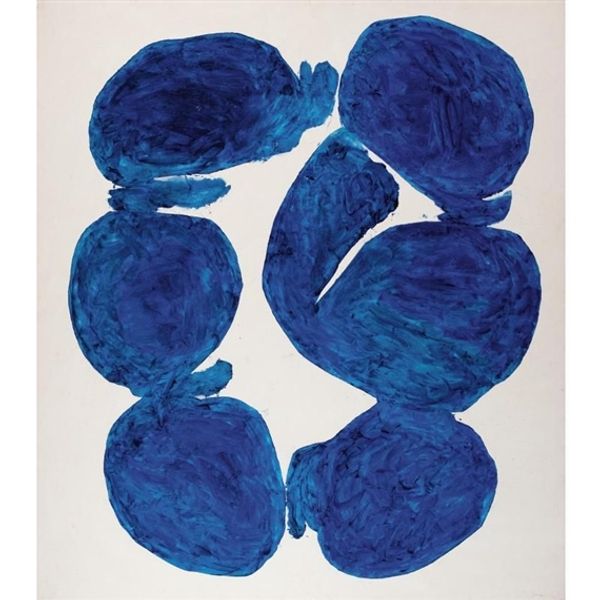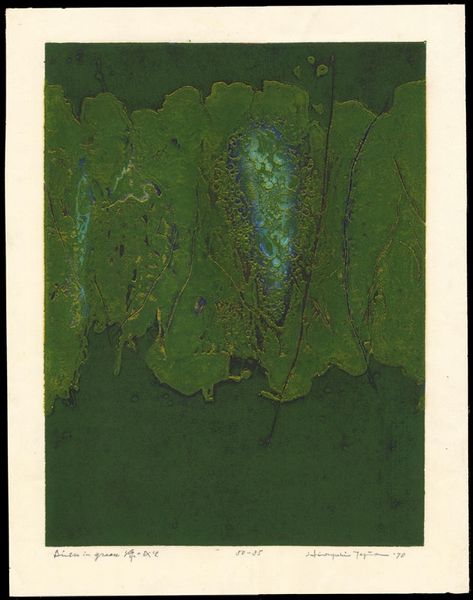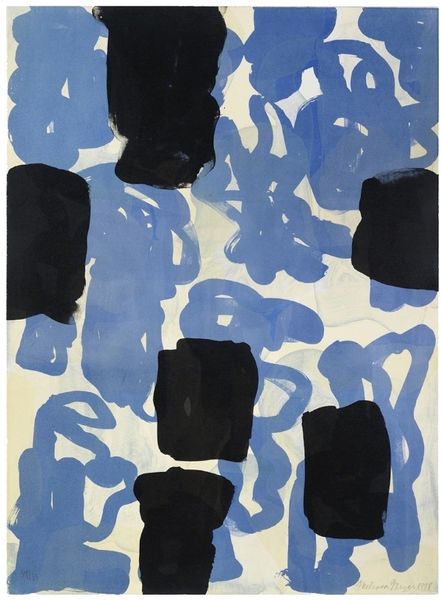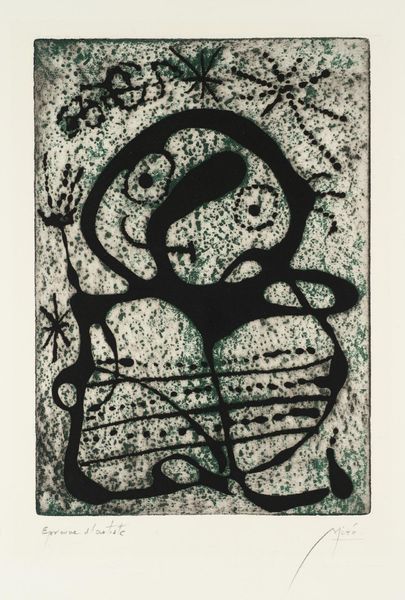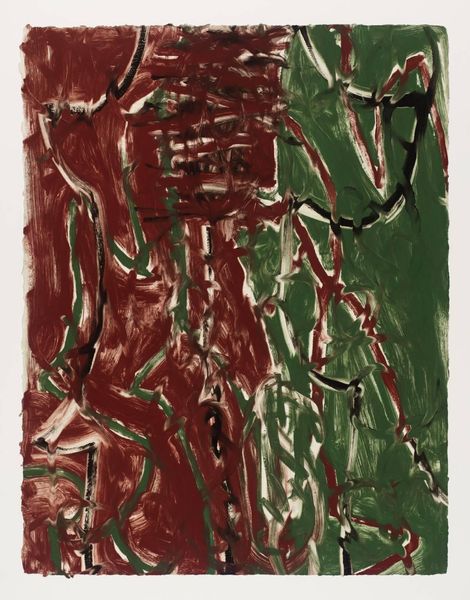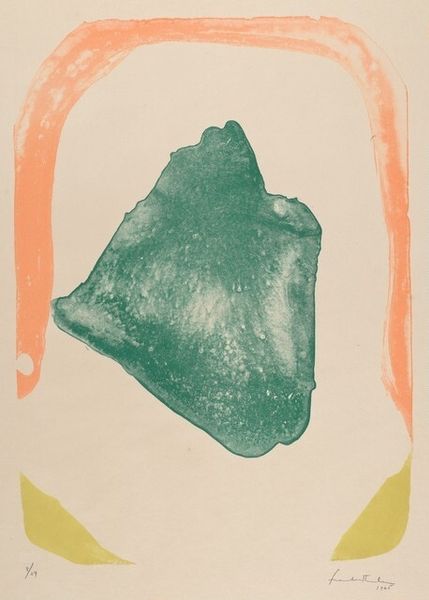
painting, oil-paint
#
abstract-expressionism
#
painting
#
oil-paint
#
form
#
matter-painting
#
abstraction
Copyright: Simon Hantai,Fair Use
Editor: So, here we have Simon Hantai's "Meun" from 1968, created with oil paint. The first thing that strikes me is the boldness of the green. What’s your perspective on this piece? Curator: This boldness is a key element. Let's consider Hantai's technique: the pliage, or folding, was central to his practice. This painting isn't just about the green pigment; it’s about the physical act of manipulating the canvas. How do you think the artist’s process might speak to its meaning? Editor: That's fascinating! I see now how the white areas become almost as important as the green. Do you mean the folding involved labour but also… removal? Curator: Precisely! The 'negative' spaces become part of the piece through the absence of paint. Hantai challenges traditional painting; instead of purely additive processes, it is subtractive too. What do you observe about the texture of the green areas, particularly the edges? Editor: The edges are a bit uneven and almost fringed, hinting at the canvas underneath. It’s not perfectly contained; almost as though that removal you just mentioned is not complete. Does that say something about the relationship of making and un-making at the time, perhaps about ideas in postwar Europe? Curator: That's a perceptive connection. He reframes not just *what* constitutes the final work, but the *how*. Consider how these raw, 'unpainted' areas redefine the typical definition of 'high art', which usually requires very refined and controlled art applications, contrasting ideas around consumption. Editor: So, by focusing on process, Hantai elevates the action of making and reveals the material. Curator: Exactly! It encourages us to value the artistic process. I now realise that through considering your reading, the piece really is talking about postwar social change.
Comments
No comments
Be the first to comment and join the conversation on the ultimate creative platform.
